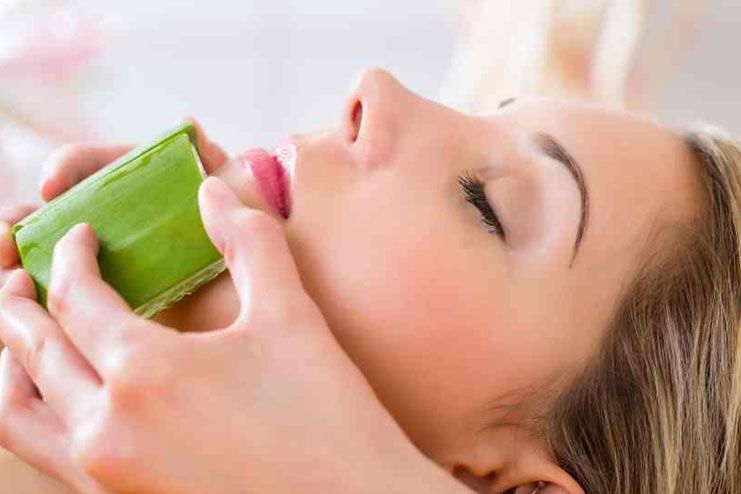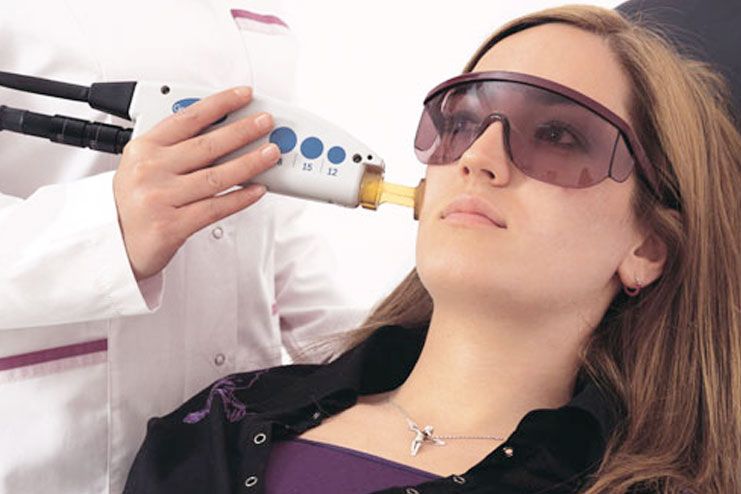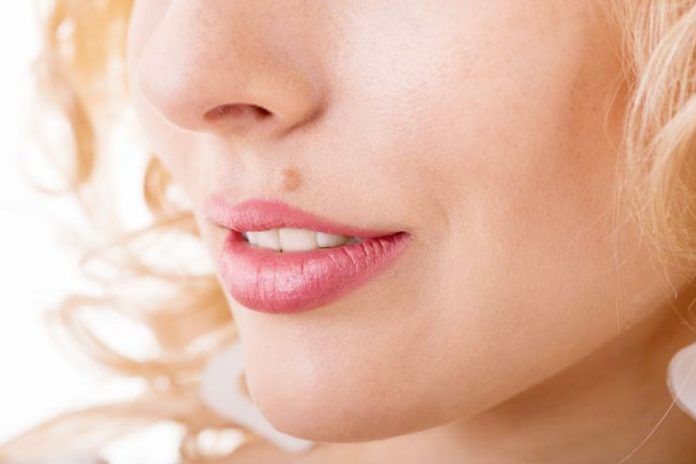Affiliate Disclaimer
Some links in this article are affiliate links. We may earn a small commission if you make a purchase through these links, at no extra cost to you. We only recommend products we find useful to our readersNearly half the population has facial warts at some time or another in their life. These warts may turn bothersome as they grow. Hence, getting rid of warts on the face as early as possible becomes imperative.
However, the treatment should begin with finding the reason behind the warts.
Read through this HealthSpectra article to learn everything about the causes, prevention, and home remedies for wart removal on the face.
What are Warts? How to Identify Them?
A wart is a skin growth caused by a type of virus that enters the body from the broken area of the skin and infects the top layer of the skin.
Warts should be identified carefully. They should not be mistaken or confused for moles, pimples, and malignant neoplasms. Below are a few indications to help you identify warts:
- Colorless, white, flesh-colored warts may look dark brown or gray when they are young
- They appear uneven or rough
- They are raised above the skin
- They may cause pain when pressed
Causes of Warts on the Face
Here are some of the causes of wart formation:
- The main reason is the spread of human papillomavirus from its carrier/ from another person
- The second common cause is other viruses or poor hygiene.
- Other secondary reasons include:
- Metabolic disorders
- Weak immune system, hence the warts often develop in older people, adolescents, pregnant women, or people with poor health
Types of Facial Warts
Warts can be broadly classified into common warts, flat warts, and filiform warts.
- A common wart is a dense, rounded growth with a papillary surface that is light brown or gray in color. It is slightly elevated above the skin and usually forms around the lip area.
- Flat warts have a smooth surface and are pink or light brown in color. They can form in multiple numbers and affect adolescents and children.
- Filiform warts develop in a ridge shape and are one to four millimeters long. They are usually vulnerable to injuries.
Any of these warts on the face may lower one’s self-esteem and may prevent you from communicating confidently with others. Many warts tend to grow in size gradually, which becomes more bothersome. So, it becomes essential to get rid of warts in a safe way.
Home Remedies to Treat Warts on the Face
To treat facial warts at home, the first thing to do is to remove external irritants. Follow these steps, before following any home remedy.
- Wash your body with liquid soap only.
- Do not rub or shave to eliminate inflammation.
- Never use any tonics or alcohol to get rid of the warts, as they may become vulnerable to infections.
Below are some popular home remedies for wart removal on the face. These are generally safe, but we suggest you check for skin sensitivity before proceeding. To be even more cautious, discuss with your physician before proceeding.
- Use Natural Disinfectors
- Use Aloe Vera
- Apply Salicylic Acid
- Apple Juice
- Wormwood Or Celandine Juice
- Simple Sea Salt And Horseradish Juice
- Hydrogen Peroxide
- Use Potato
- Aloe juice, Goat fat, Beet, and Horseradish Juice
- Defect Lemon Essential Oil
1. Natural Disinfectors
Onions and garlic work as effective natural disinfectors. Husk both onions and garlic, grate, and mix them.
Apply the mixture on the wart, cover with a bandage, leave for 40 minutes, and then wash off. Repeat this 4 to 5 times a day. Adding a teaspoon of vinegar to the mix may make it even more effective.
The method is not suitable for sensitive areas of the face such as the eyes.
2. Aloe Vera

Aloe vera is known for its anti-inflammatory properties that can be very effective in treating warts.
Chop aloe vera leaves and apply the resulting puree to gauze or plaster. Apply bandage, and leave it on overnight. Repeat if necessary.
Read More: Benefits of Aloe Vera
3. Salicylic Acid
The most common treatment, salicylic acid, removes warts by destroying the skin layer by layer. Immerse a ball or cotton swab in salicylic acid and apply it to the wart.
4. Apple Juice
Apply apple juice from sour apples on the area with warts. The medicinal properties of apple juice can help your skin become free of warts.
Apply apple juice as a smear on the small brown facial warts. Repeat regularly to see progress.
5. Wormwood or Celandine Juice
Cauterize small warts with wormwood or celandine juice. Ensure to avoid contact with eyes.
To extract the juice, crack a stem of celandine or wormwood and apply it to the growth. Ashberry or calendula juice can be applied similarly.
6. Simple Sea Salt And Horseradish Juice
This mixture can help the skin eliminate warts. Mix one teaspoon of salt and two tablespoons of horseradish juice. Rub the mixture on the affected area and leave for around 20 minutes. Then, rinse with cold water. Repeat twice a day.
7. Hydrogen Peroxide
Hydrogen peroxide can help remove warts by making them fall off. To reduce chronic or subcutaneous facial warts, soak a cotton swab in 30% hydrogen peroxide and apply it to the face. Hold for a couple of hours. Repeat twice a day.
8. Potato
Another popular method is to use potatoes to treat warts. Grate a potato with its peel and mash it. Apply the potato mash to the face and leave it to dry. Repeat this at least once a day.
9. Aloe, Goat Fat, Beet, and Horseradish Juice for Warts on Eyelids or Nose
Immerse a cotton swab in any of these juices and place it on the eyelid or nostril. Hold for 20 minutes and wash off. Repeat this 3 to 4 times a day.
10. Lemon Essential Oil
The astringent properties of lemon essential oil can reduce excess sebum on the skin by shrinking large pores. Apply the lemon essential oil on the affected area and cover it with the plaster. Repeat the procedure every 3 hours.
Note: It is advisable to treat with home remedies after consulting your doctor, as ideally, infectious warts are removed faster with medicines. Prescribed ointments effectively treat infections like candidiasis.
How to Get Rid of Warts Medicinally?

Warts on the face are treated professionally based on their type, such as Common warts (Verruca vulgaris), Flat warts (Verruca plana), and Filiform warts.
- The basic treatment for common warts on the face is by removing them with liquid nitrogen or through a laser.
- The conventional flat wart removal methods include the use of retinoids, liquid nitrogen, or lasers.
- Self-removal of the filiform warts is highly prohibited due to the high probability of injury.
Basic solutions include:
- Directly apply salicylic acid onto the wart every day. This OTC is largely recommended by the American Academy of Dermatology as the wart remover for treating facial warts (R). The medication essentially peels away layer after layer of the wart, totally removing it. However, ensure that the solution is away from the rest of the skin while applying.
- Your doctor may apply a cantharidin solution over the wart. This blistering agent lifts away the wart from the skin. Thus, the dead portions of the wart are removed, and another treatment may remove the growth.
- A prescription for tretinoin, a medicated cream, is generally used as acne treatment. According to the American Academy of Dermatology, tretinoin can help treat and remove facial warts. It should be applied directly to the wart to hinder cellular growth.
- Cryotherapy may be an option, but many do not consider this as an appropriate method for facial wart removal. A few doctors may prefer this assessment based on the severity and the location of the wart. This method involves the application of a liquid nitrogen solution on the wart, to destroy its cells. Thus, the dead portions are removed, followed by another application.
- Surgical removal is the last option. Surgery is typically done with a scalpel due to a decreased chance of scarring compared to a laser. The procedure involves scooping out the facial wart out of the skin. However, it is the last option and is only reserved for extremely difficult warts.
Radio wave therapy, cryotherapy with liquid nitrogen, photodynamic therapy, or laser therapy may become the last options if everything else fails.
Whatever the treatment, it can be followed by implications like inflammation, irritation, or swelling in the treated area. However, in most cases, they subside in a couple of days. If they do not disappear, consult your doctor.
Tips to Prevent Formation of Warts
To prevent the recurrence of warts or avoid the chances of development, follow a few simple measures listed below:
- Maintain good skin hygiene
- Do not scratch wounds, moles, pimples, and papillomas
- Get your regular appointment with a dermatologist. It may help identify initial symptoms and thus increase the chances of prevention
- Nutrition is key. Consume a highly nutritious diet and avoid junk and unhealthy food to lessen the chances of the development of unnecessary warts on the face
Conclusion
Facial warts are usually harmless but may be unsightly and frustrating. While applying apple cider vinegar or tea tree oil can be an effective remedy for some, more stubborn warts would have to be treated by a medical professional.
Various treatments, such as cryotherapy, laser therapy, or topical medications, are prescribed by dermatologists. The best way to avoid warts is through good hygiene, avoiding skin-to-skin contact with infected people, and having a healthy immune system, which can all minimize the chances of having warts.
FAQs:
- What does a wart look Like when it starts?
A wart may look like a small bump on the flat surface of the facial skin. Blood supply to the wart is facilitated by the tiny blood vessels that grow into it. The blood vessels look like dark dots at the center of the wart, in both plantar and common warts. However, the warts are generally painless.
- Are warts contagious? Do they spread from person to person?
As mentioned earlier, human papillomavirus (HPV) is the causative agent for the formation of facial warts. Even though they are benign, they are contagious in nature. According to several studies, common warts can be spread through skin-to-skin contact (R).
However, not all viruses are contagious and the susceptibility of the opposite person to the virus depends on his or her immune system. Studies revealed different reactions to HPV by members of the same family.
- Where do warts occur?
Apart from the face, warts usually occur on hands, feet, genitals, and any other part of the body. Warts occurring on the genitalia are Genital warts. A group of tightly clustered plantar-type warts called mosaic warts occurs on the hands or soles of the feet.
The cauliflower-like cluster of warts called Periungual warts occurs around the nails. Plantar warts are only found on pressure points on the soles of the feet.
-
Jan 2018Written by Sumana Maheswari
-
Jan 2025Edited by Lakshmi Gayatri
In this Article















